#Facebook Retargeting
Explore tagged Tumblr posts
Text
Retargeting Audiences on Facebook: Best Practices for Maximizing ROI
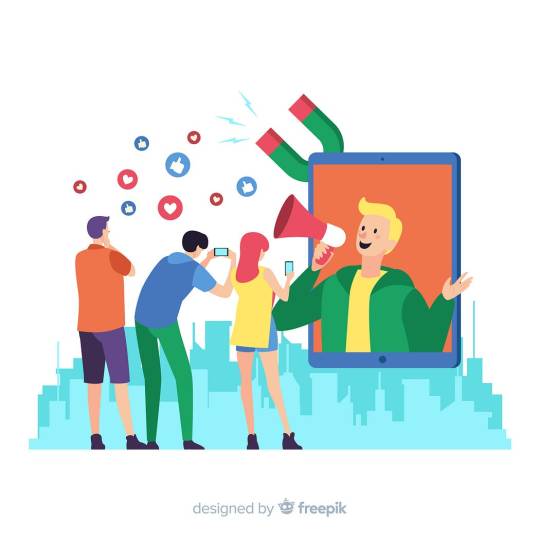
1. Understand Your Audience Segmentation
The first step in an effective Facebook Retargeting strategy is audience segmentation. Instead of targeting all visitors with the same message, segment your audience based on behavior. For example, you can retarget users who:
Viewed a product page but didn’t purchase
Abandoned their shopping cart
Engaged with your Facebook page or posts but didn’t click through to your site
This strategy allows you to create highly relevant ads that appeal to the specific stage of the customer journey. When you’re running a retargeting campaign, the more tailored your message, the higher the likelihood of converting that user.
Pro Tip: Utilize Facebook’s custom audience feature to build specific audience segments based on pixel data or customer lists.
2. Optimize Ad Creatives for Each Segment
Creativity in retargeting ads can make a huge difference in performance. As a PPC Marketing Agency in Pune, we’ve seen the value of customizing ads based on the audience’s interaction with your brand. A user who abandoned their shopping cart may respond well to a discount offer, whereas someone who only visited a product page might need more product details or testimonials to encourage a purchase.
Here’s how you can optimize your Facebook Ads Optimization:
Use dynamic ads that automatically display the products a user has shown interest in.
A/B test different formats such as carousel ads, videos, and static images to see what resonates with your audience.
Include a strong call-to-action (CTA) that speaks directly to their stage in the purchase funnel.
3. Frequency Cap Your Ads
While retargeting allows you to stay in front of potential customers, overexposure can lead to ad fatigue. To avoid this, it’s essential to implement frequency caps. This ensures that users aren’t bombarded with your ads, which could result in negative brand sentiment.
A common rule is to set your frequency cap between 2 to 3 impressions per user over a short period. This way, users remain aware of your brand without feeling overwhelmed.
4. Leverage Sequential Retargeting
Sequential retargeting takes personalization a step further. Instead of showing the same ad repeatedly, you can serve ads in a sequence that aligns with the user’s journey. For example:
Day 1: Show a product ad to remind them of what they viewed.
Day 3: If no action is taken, show a testimonial or case study to build trust.
Day 5: Offer a discount or incentive to encourage immediate action.
This retargeting strategy builds a story that progresses based on the customer’s interaction with your brand, making the experience more engaging.
5. Incorporate Retargeting into a Broader Funnel Strategy
Retargeting should be part of a broader funnel strategy that includes awareness, consideration, and conversion. Focus on using Facebook retargeting to move users from the consideration phase to conversion, but also ensure you’re running top-of-funnel campaigns to bring in new visitors.
The effectiveness of Facebook Ads Optimization lies in aligning the retargeting with the overall customer journey. If your retargeting campaigns are isolated from your broader strategy, they might feel disconnected, reducing their impact.
6. Use Lookalike Audiences for Expansion
Once your retargeting campaigns are driving conversions, it’s time to scale. Facebook’s Lookalike Audience tool allows you to find new users who are similar to your most valuable retargeting audience. This helps in expanding your reach while maintaining relevance.
Lookalike Audiences can be created based on your custom audience from the retargeting campaigns, ensuring that you are not only re-engaging past visitors but also attracting new, high-quality prospects.
7. Monitor and Optimize Regularly
Lastly, no retargeting strategy is complete without proper monitoring and optimization. As a PPC Marketing Agency in Pune, we constantly analyze performance metrics such as CTR (Click-Through Rate), CPC (Cost-Per-Click), and conversion rates to ensure that the campaigns are driving optimal results.
A few key actions to optimize your campaigns:
Exclude converted users from your retargeting audience to avoid wasting ad spend.
Adjust bids for high-value audience segments.
Regularly refresh your ad creatives to combat ad fatigue.
Conclusion
Retargeting on Facebook is one of the most efficient ways to re-engage users and maximize ROI. By understanding your audience, customizing ad creatives, and implementing a clear retargeting strategy, you can drive meaningful results for your business. As a PPC Marketing Agency in Pune, we specialize in crafting and optimizing retargeting campaigns that help businesses increase their conversion rates.
0 notes
Text
PixelYourSite Pro Lifetime Deal🚀
Last Day I got an Email About the PixelYourSite Pro Lifetime Deal🚀 As a Digital Marketer, I know how useful the plugin is for server-side tracking. For server-side tracking, we need to use servers that help to track through the server. But this plugin does the same work from your hosting server. What is server-side tracking? Server-side tracking is a method of collecting and processing user data through a server instead of the user's browser. How it Works? When a user interacts with your website or app, data about their actions (e.g., clicks, purchases) is sent to your server. The server processes this data and forwards it to analytics tools, ad platforms, or databases. How does It Differ from Client-Side Tracking? Client-side tracking relies on scripts in the browser (like JavaScript) to send data directly to tools like Google Analytics. In server-side tracking, your server handles the tracking, which bypasses browser limitations. Tracking Benefits: More Accurate Data: Works even if users block cookies or use ad blockers. Increased Privacy: Sensitive data is processed securely on your server. Reduced Data Loss: Helps avoid tracking issues caused by browser restrictions (e.g., ITP in Safari). Here PixelYourSite Pro does a good job. But the plugin is too much costly as it needs to be paid annually. But I got the mail about the PixelYourSite Pro lifetime license through my affiliate link. As I am an affiliate of their program. They generally do not provide this type of offer. It is a limited-time offer, and I will say if you are an agency or business owner you can grab the license for your use before the offer ends. ✨For the offer check the Article: https://proficientman.com/pixelyoursite-pro-website-tracker/ #ServerSideTracking #PixelYourSitePro #DigitalMarketingTools #DataPrivacy #MarketingAutomation #LifetimeDeal #SaveOnTools #LimitedTimeOffer #DigitalBusinessGrowth #AffiliateMarketing #WordPress #Plugin #Marketing #FacebookAd #GoogleAd
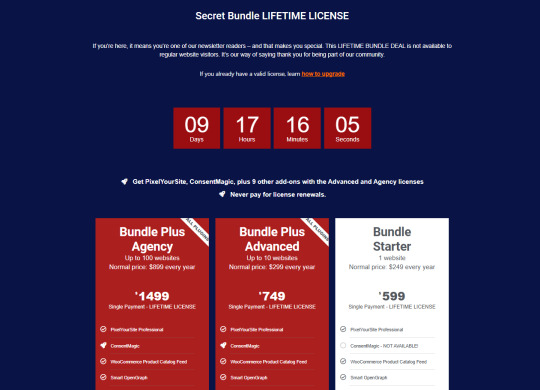
0 notes
Text
Master Instagram: Modern Marketing Guide
In the ever-evolving world of digital marketing, Instagram stands out as a powerhouse platform with over 1 billion active users. If you’re looking to harness the potential of Instagram to grow your brand, drive traffic, and boost sales, the “Modern Instagram Marketing” video course is your ultimate guide. This article will delve into the most important features of this comprehensive course, helping you understand why it’s a must-have for any serious marketer.
Why Choose the Modern Instagram Marketing Video Course?
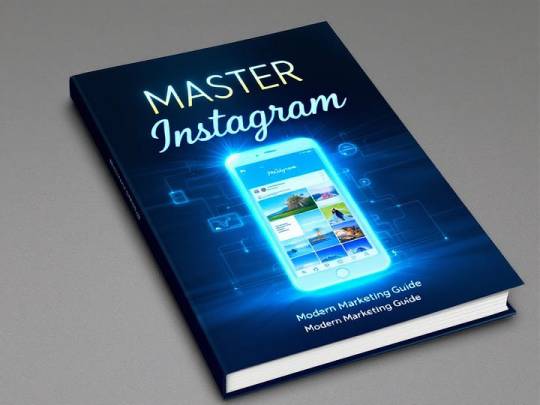
1. Building a Real Following on Instagram
One of the standout features of the “Modern Instagram Marketing” video course is its focus on building a genuine following. The course provides a step-by-step guide to help you create a loyal community around your brand. By following the strategies outlined in the course, you can attract and engage with your target audience effectively.
Key Takeaway: Learn how to build a real following on Instagram with proven strategies that work.
2. Reverse Engineering Competitor Success
Understanding what works for your competitors can give you a significant advantage. The course teaches you how to find your competitors on Instagram, analyze their strategies, and reverse engineer their success. Doing so lets you identify what content resonates with your audience and adapt it to your marketing efforts.
Key Takeaway: Discover how to analyze and replicate the success of your competitors on Instagram.
3. Curating Top-Notch Content
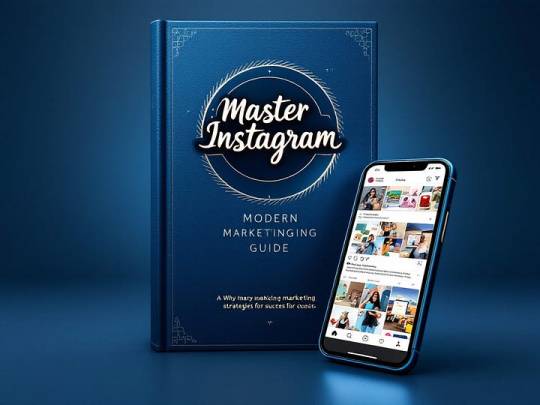
Content is king on Instagram, and the “Modern Instagram Marketing” video course emphasizes the importance of curating high-quality content. You’ll learn to mix curated content with your unique creations to keep your audience engaged and interested.
Key Takeaway: Master the art of content curation to keep your audience engaged and growing.
Ready to take your Instagram marketing to the next level? Don’t miss out on this limited special offer! Click here to download the “Modern Instagram Marketing” video course and start your journey to Instagram success today.
4. Adopting a Content-First sales funnel
A content-first sales funnel is essential for converting Instagram traffic into paying customers. The course walks you through creating a sales funnel that prioritizes content, ensuring that your audience is qualified and ready to purchase when they reach your sales page.
Key Takeaway: Implement a content-first sales funnel to maximize conversions and sales.
5. Leveraging Facebook’s Ad Retargeting System
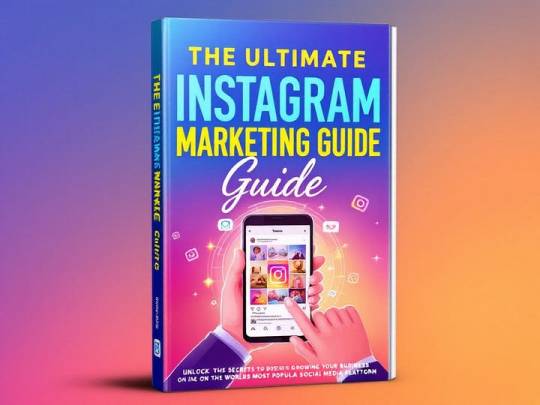
Retargeting is a powerful tool for bringing back visitors who have shown interest in your content but haven’t converted yet. The course teaches you how to use Facebook’s ad retargeting system to pull Instagram users deeper into your funnel, increasing the likelihood of conversions.
Key Takeaway: Utilize Facebook’s ad retargeting system to boost conversions and sales.
6. Interacting with Niche-Specific Influencers
Influencer marketing is a crucial aspect of Instagram's success. The course provides insights into how to identify and interact with niche-specific influencers who can help promote your brand. Building relationships with the right influencers can help you reach a wider audience and gain credibility.
Key Takeaway: Learn how to identify and collaborate with niche-specific influencers to expand your reach.
Ready to take your Instagram marketing to the next level? Don’t miss out on this limited special offer! Click here to download the “Modern Instagram Marketing” video course and start your journey to Instagram success today.
7. Continuous Optimization
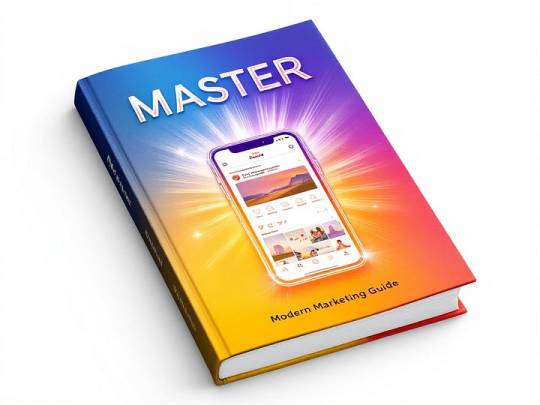
Optimization is an ongoing process, and the “modern Instagram marketing” video course emphasizes the importance of continuously optimizing all parts of your funnel. From your Instagram profile to your landing pages, you’ll learn to make data-driven decisions to improve your results.
Key Takeaway: Master the art of continuous optimization to maximize your Instagram marketing efforts.
Frequently Asked Questions
Q: Is the Modern Instagram Marketing Video Course suitable for beginners?
A: Absolutely! The course is designed to be accessible for both beginners and experienced marketers. It provides a comprehensive overview of Instagram marketing strategies, making it easy for anyone to get started.
Q: How long does it take to see results with the strategies taught in the course?
A: The timeline for seeing results can vary depending on your niche, competition, and the effort you put into implementing the strategies. However, you can see improvements within a few weeks to a few months with consistent effort and optimization.
Q: Can I apply these strategies to other social media platforms?
A: While the course is tailored for Instagram, many principles and strategies can be adapted for other social media platforms. Fundamentals of content marketing, influencer collaboration, and sales funnel optimization apply across various platforms.
Q: Is there a money-back guarantee?
A: Yes, the course comes with a satisfaction guarantee. If you’re not happy with the content or the results, you can request a refund within a specified period.
Ready to take your Instagram marketing to the next level? Don’t miss out on this limited special offer! Click here to download the “Modern Instagram Marketing” video course and start your journey to Instagram success today.
Transform your Instagram presence and watch your brand grow with the “Modern Instagram Marketing” video course. Don’t wait—start your journey to success now!
#Build Instagram following#Competitor analysis on Instagram#Content-first sales funnel#Facebook ad retargeting#Influencer collaboration#Instagram content creation#Instagram marketing#Instagram optimization#Modern Instagram strategies#Social media marketing tips
0 notes
Text
Remarketing vs Retargeting: How They Work and Why They Matter
In the present world of Internet advertising, getting identified is not easy.
Sometimes, it appears as one is literally shouting into an empty hall, and hoping someone listens to the brand, even if it provides excellent products or services. Remarketing vs Retargeting, both strategies becomes necessary in this situation.
With the help of these giants of digital marketing, you could turn those potential customers ever seen to rivals into fans.
But what is the difference between Remarketing and Retargeting?
How can the two be utilised to the maximum and encourage clients to make more purchases in the Market?
In this guide, we are going to explain what Remarketing and Retargeting terms are, provide some actual examples of the respective campaigns, and reveal the secrets of using this tool as efficiently as possible. Plus, we will develop some important digital marketing initiatives to help you start well.

Remarketing vs Retargeting: The Difference
Now, what is the main difference between Remarketing and Retargeting is the fact that both phrases belong to digital marketing and serve different functions in it.
Remarketing
Remarketing should be aimed at capturing those that have had an initial interest in your business. Often it includes the use of the advertisement banners to the users who have been to your site or those who have bought something from you. They are so useful in the remarking strategy because the overall aim is to develop the existing relationship with the customers and get them to come back for more products.
Remarketing: Example
An example of Remarketing is sending emails to those regarding abandoned carts with the purpose to remind the customer to complete the purchase. E-commerce is where you are looking for a product, carrying it to the shopping cart, but due to some reason you are distracted and leave the site. Following that, you will receive an email notifying you of items left behind, and at times with a code to complete the transaction.
This is the most basic Remarketing to conversion that one can come across in the modern world. Some of them include emails that are sent after a purchase has been made.
Retargeting
Retargeting is directed toward the target audience as those visitors who came to the site but did not make a purchase. These visitors are tracked by use of cookies and advertisers are then allowed to post ads relevant to the website that these visitors have been visiting. It is whereby you must constantly remind them of your brand and mobilize them to take the desired action of buying.
Retargeting: Example
The final product of the Campaign is to Keep Star Auto Top of Mind The campaign can be summarized by the tagline “Keep Star Auto Top of Mind”.
Retargeting, simply is about keeping the customer or potential buyer aware of your business or your product. For instance, if you are buying running shoes online and you quit from the website, you might experience the same shoes being advertised to you in another website. These are kind of ads that Retargeting and make you remember your interest in the product and thus complete the purchase.
For more details, please visit: https://www.startmetricservices.com/blog/remarketing-vs-retargeting/
0 notes
Text
Get your $500 Google ads Credit to promote your business
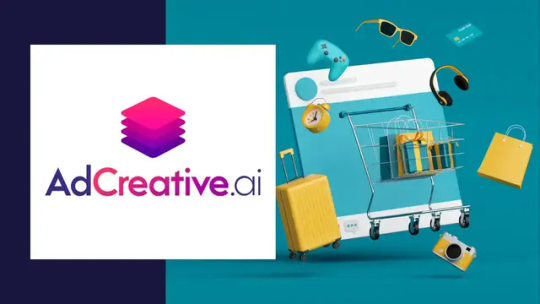
Get your $500 Google ads Credit to promote your business
#Online advertising#Digital marketing#Paid ads#Google Ads#Facebook Ads#Tumblr marketing#Advertising strategies#Audience targeting#Keywords#Ad campaigns#Ad optimization#Retargeting#Ad conversions#Native ads#CTR (Click-Through Rate)#CPC (Cost per Click)#CPM (Cost per Thousand Impressions)#Ad impressions#Sales funnel#Performance metrics#Results analysis#Brand exposure#A/B testing#Video ads#Remarketing#Display ads#Text ads#Landing pages#Geolocation#Engagement metrics
1 note
·
View note
Text
#digitalmarketing#run facebook ads#facebook and google ads#facebook and instagram ads campaign#facebook and instagram shop#grow instagram account#facebook ads consultant#facebook ads manager#facebook ads design#social media manager instagram#facebook ads campaign manager#facebook ad account disabled#verified facebook business manager#dropshipping facebook ads#instagram manager and content creator#recover hacked instagram account#facebook and instagram business page#facebook page create and setup#facebook ads campaign specialist#facebook retargeting ads#facebook marketing#facebook ads ecommerce#facebook lead generation ads#instagram promotion#fix restricted facebook ad account#facebook conversion api#facebook ads setup and management#remarketing ads#google ads remarketing#google ads conversion tracking
0 notes
Text
Retargeting with Facebook Ads || How to Reach Your Target Audience? Easy Guide
Retargeting is a powerful marketing strategy that helps businesses reach potential customers who have already interacted with their brand. Retargeting with Facebook becomes even more effective, as the platform allows you to display highly targeted ads to users who have already shown interest in your brand. In this article, we’ll explore the benefits of retargeting with Facebook Ads and provide…

View On WordPress
#ad targeting#behavioral targeting#Custom audience#digital advertising#Facebook ads#Facebook pixel#online advertising#online marketing#remarketing#retargeting#social media marketing
1 note
·
View note
Text
Unlocking Success: The Best Use of Facebook Marketing
In the dynamic landscape of digital marketing, Facebook remains a powerhouse for businesses seeking to connect with their target audience and drive results. With over 2.8 billion monthly active users, Facebook offers an unparalleled platform for businesses to enhance brand visibility, engage with customers, and boost sales. Here's a comprehensive guide on the best use of Facebook marketing to maximize your business potential:

1. Create a Compelling Business Page:
Your Facebook business page is the digital face of your brand. Ensure it's visually appealing, consistent with your brand identity, and includes essential information such as your business hours,

contact details, and a compelling 'About Us' section. Use high-quality images and a captivating cover photo to make a lasting first impression.
2. Leverage Facebook Ads:
Facebook's robust advertising platform allows businesses to target specific demographics, interests, and behaviors. Invest time in creating eye-catching ad creatives, compelling copy, and a clear call-to-action.
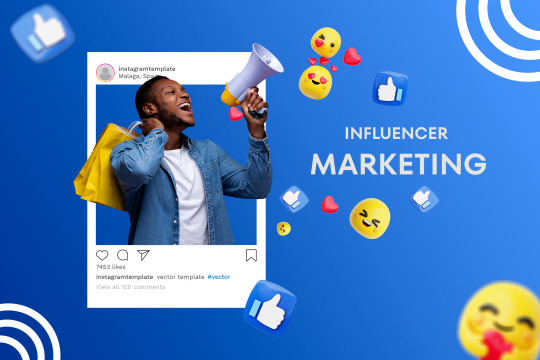
Experiment with different ad formats, such as carousel ads, video ads, and lead ads, to find what resonates best with your audience.
3. Engage with Your Audience:
Social media is all about building relationships. Regularly engage with your audience through comments, messages, and posts. Promptly respond to inquiries, address concerns, and foster a sense of community. Encourage user-generated content by running contests or asking for reviews, turning your audience into brand ambassadors.
4. Utilize Facebook Groups:
Facebook Groups provide a unique opportunity to create a community around your brand or industry. Join relevant groups and participate in discussions, positioning yourself as an authority in your niche. Alternatively, create your own group to foster a sense of belonging among your customers and prospects.
5. Harness the Power of Facebook Analytics:
Facebook Insights offers valuable data on your page performance, audience demographics, and content engagement.

Use these insights to refine your strategy, identify popular content, and optimize your posting schedule. Data-driven decisions are key to a successful Facebook marketing campaign.
6. Optimize for Mobile Users:
A significant portion of Facebook users access the platform on mobile devices. Ensure that your content is mobile-friendly, with concise and visually appealing elements. This includes mobile-optimized ads, responsive landing pages, and a seamless user experience.
7. Implement Facebook Pixel:
Facebook Pixel is a powerful tool that helps you track the actions users take on your website after clicking on your ads. Use this data to measure the effectiveness of your campaigns, retarget website visitors, and optimize for conversions. Facebook Pixel is an invaluable asset for refining your marketing strategy.
8. Run Targeted Contests and Giveaways:
Engage your audience by running contests and giveaways. Encourage participants to like, share, and comment on your posts to increase organic reach. Ensure that the prizes align with your brand and attract your target audience, fostering a positive association with your business.
9. Stay Consistent with Content Strategy:
Consistency is key in maintaining an active and engaged audience. Develop a content calendar and post regularly to keep your audience informed and entertained.
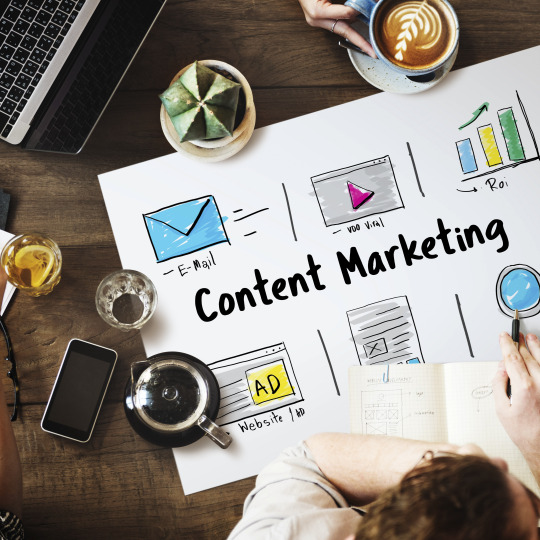
Mix up your content types, including images, videos, articles, and user-generated content, to maintain variety.
10. Test and Iterate:
The digital landscape is ever-evolving, and what works today may not work tomorrow. Continuously test different strategies, analyze results, and iterate based on the feedback and data you receive. This iterative approach will help you stay ahead of the curve and adapt to changing consumer behavior.
#digital marketing#online marketing#seo services#marketing agency#seo expert#seo marketing#best digital marketing agency#facebook marketing#facebook ad agency services#facebook ads#facebook advertising
28 notes
·
View notes
Text
Unleashing the Power of Facebook Marketing: Best Strategies for Success
In the ever-evolving landscape of digital marketing, Facebook continues to reign supreme as a powerhouse platform for businesses looking to connect with their target audience, build brand awareness, and drive sales.

Crafting an effective Facebook marketing strategy is essential for staying ahead in the competitive online market. Here, we explore the best strategies to make the most of your Facebook marketing efforts.
Create a Compelling Business Page: Facebook Business Page is the foundation of your online presence. Optimize it by providing complete and accurate information, using high-quality visuals, and incorporating your brand's unique personality.

Regularly update your profile and cover photos to keep your page fresh.
Content is King: Develop a content strategy that resonates with your audience. Use a mix of engaging text, eye-catching visuals, and videos. Experiment with different content types to see what works best for your target demographic. Consistency is key, so establish a posting schedule and stick to it.
Leverage Facebook Ads: Facebook's robust advertising platform allows you to reach highly targeted audiences. Utilize Facebook Ads to promote your products or services, boost posts, and drive website traffic.

Experiment with different ad formats, such as carousel ads, video ads, and slideshow ads, to see what generates the best results.
Harness the Power of Video: Video content has become increasingly popular on Facebook. Utilize live videos, tutorials, behind-the-scenes glimpses, and storytelling to engage your audience. Facebook's algorithm often favors video content, leading to higher reach and engagement.
Engage with Your Audience: Actively respond to comments, messages, and reviews on your page. Encourage discussions, ask questions, and run polls to foster a sense of community.

By engaging with your audience, you build trust and loyalty, which can translate into customer retention and advocacy.
Run Contests and Giveaways: Create excitement and boost engagement by running contests and giveaways. Encourage users to like, share, and comment for a chance to win. This not only increases your reach but also creates a buzz around your brand.
Utilize Facebook Analytics: Regularly analyze Facebook Insights to understand the performance of your content and ads. Identify trends, track key metrics, and adjust your strategy accordingly.

This data-driven approach ensures that you're making informed decisions to optimize your Facebook marketing efforts.
Implement Retargeting Strategies: Make use of Facebook Pixel to track website visitors and retarget them with relevant ads. This helps re-engage potential customers who have shown interest in your products or services, increasing the likelihood of conversion.
Collaborate with Influencers: Partnering with influencers can significantly expand your reach.
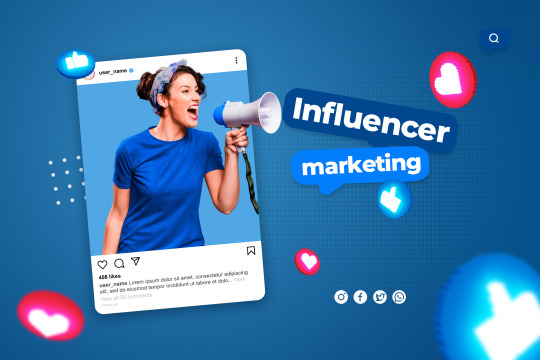
Identify influencers whose audience aligns with your target demographic and collaborate on sponsored content or promotions.
Stay Updated on Algorithm Changes: Facebook's algorithm evolves, impacting how content is displayed in users' feeds. Stay informed about algorithm changes and adjust your strategy accordingly. Currently, meaningful interactions and quality content are prioritized, so focus on creating content that sparks genuine engagement.
Conclusion:
Mastering Facebook marketing requires a combination of creativity, consistency, and adaptability. By implementing these strategies, you can unlock the full potential of Facebook as a marketing powerhouse, driving brand growth and achieving your business objectives. Keep refining your approach based on data and feedback, and watch as your brand flourishes in the dynamic world of social media marketing.
#facebook marketing#digital marketing#influencers#seo#linkedin#facebook ads#social media marketing#search engine optimization#online marketing#learn digital marketing#seo expert#marketing agency#facebook advertising#facebook ad manager#facebook ad agency services#facebook ad boost#social media#socialmedia#facebook
20 notes
·
View notes
Text
How to Use Dynamic Product Ads on Facebook for E-Commerce Success
In the highly competitive world of e-commerce, staying relevant and visible to potential customers is vital. One of the most effective ways to boost conversions and drive sales is by leveraging Dynamic Product Ads on Facebook. These ads allow you to display your products to users who have already shown interest in them by visiting your website or engaging with your social media platforms. As a social media marketing services in Pune provider, we understand the importance of using effective strategies to help our clients reach their goals. In this article, we’ll cover how you can make the most of Facebook Dynamic Product Ads to improve your e-commerce sales.
What are Facebook Dynamic Product Ads?
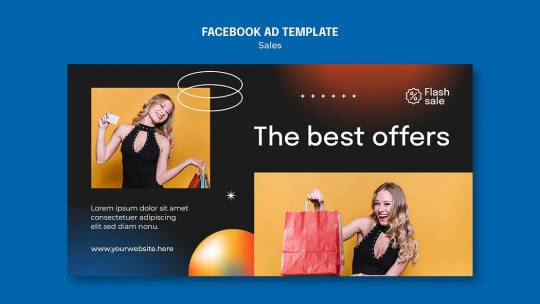
Benefits of Using Dynamic Product Ads for E-Commerce
Here are some key benefits of using Dynamic Product Ads for Online Store Conversion:
Automated Personalization: DPAs deliver a personalized shopping experience without the need for manual intervention. By dynamically displaying products that users have previously interacted with, you can show them relevant ads and encourage them to complete their purchase.
Retargeting Potential: DPAs are ideal for Facebook Retargeting for E-commerce. When users abandon their shopping carts or view specific products without purchasing, DPAs retarget them with those products, reminding them to return and complete their purchase.
Cost-Effective Solution: DPAs help optimize your ad budget by showing relevant products to people who are most likely to purchase. This maximizes your ad spend, reduces wasted impressions, and improves online store conversion rates.
Scalability: As you add more products to your catalog, DPAs automatically update to reflect your current inventory, making it easy to scale your ad campaigns.
Increased Return on Ad Spend (ROAS): By targeting users who have already shown interest, DPAs typically yield higher ROAS compared to non-targeted ads.
Step-by-Step Guide to Setting Up Facebook Dynamic Product Ads
Create Your Product Catalog The first step in setting up Dynamic Product Ads is to create a product catalog on Facebook Business Manager. This catalog is essentially a database that includes all the information about your products, including images, descriptions, prices, and availability. You can create and manage your product catalog manually or use e-commerce platforms like Shopify or WooCommerce, which have built-in integration with Facebook.
Set Up Facebook Pixel To track user activity on your website, install the Facebook Pixel. The pixel helps gather data on how users interact with your website, including product views, add-to-cart actions, and purchases. This information is then used to retarget users with relevant ads. A properly configured Facebook Pixel is essential for Dynamic Product Ads for Online Store Conversion as it enables data collection and user segmentation.
Define Your Target Audience With Dynamic Product Ads, you can set up retargeting audiences, such as those who visited a specific product page but did not complete a purchase. Boost e-commerce sales with Facebook Ads by defining specific audiences based on user behavior, such as:
Product Viewers: Users who viewed a product but didn’t purchase.
Cart Abandoners: Users who added a product to their cart but didn’t complete the transaction.
Past Purchasers: Users who bought a product in the past and may be interested in similar items.
Set Up Your Ad Template Use Facebook Ads Manager to create a DPA template. The template allows you to dynamically showcase different products based on the audience’s preferences. Be sure to customize the text, call-to-action (CTA), and layout to align with your brand’s tone and style. Highlight special offers, discounts, or features of the products to enhance engagement and boost e-commerce sales.
Optimize Your Ad Copy and Visuals Effective ad copy and visuals are key to maximizing the impact of Dynamic Product Ads. Ensure that product images are clear and high-quality, as they are the first elements that capture user attention. The ad copy should include persuasive language, such as “Limited Time Offer,” “Buy Now,” or “Free Shipping,” to create urgency.
Analyze and Optimize Performance Track the performance of your DPAs through Facebook Ads Manager. Pay attention to key metrics such as click-through rate (CTR), conversion rate, and ROAS to determine which elements of your ad strategy are working and where there’s room for improvement. Experiment with different ad variations, visuals, and CTAs to see what resonates best with your audience. Regularly update your product catalog to ensure that new products are included in your ad campaigns.
Best Practices for Using Dynamic Product Ads
To get the most out of Facebook Dynamic Product Ads for e-commerce, follow these best practices:
Segment Your Audience for Effective Retargeting: Define specific audience segments based on their interaction level. By tailoring ads for different user groups, you can drive more conversions.
Use Compelling Visuals and CTAs: Since visuals are crucial in social media ads, ensure your product images are visually appealing. Add strong CTAs to encourage clicks.
Leverage Seasonal Trends: Tailor your DPAs to match seasonal trends, such as holidays or sales events. This creates a sense of urgency, encouraging users to purchase.
Monitor and Update Regularly: Regularly monitor ad performance to identify areas that need improvement. Update your product catalog and ad copy to ensure it remains relevant and attractive.
Utilize Retargeting to Reduce Cart Abandonment: Many users abandon their carts before completing a purchase. Use DPAs to retarget these users and remind them of items left in their cart.
Conclusion
Implementing Facebook Dynamic Product Ads as part of your social media marketing services in Pune strategy can significantly enhance your e-commerce success. By targeting users based on their previous interactions, DPAs deliver a personalized experience that leads to increased engagement and higher conversion rates. As a leading social media marketing provider, we help brands use Facebook Retargeting for e-commerce to turn casual browsers into loyal customers. Start using DPAs to elevate your online store conversions, drive sales, and maximize your e-commerce marketing strategy today.
#Social media marketing services in pune#Facebook Dynamic Product Ads Best Practices#Boost E-commerce Sales with Facebook Ads#Facebook Retargeting for E-commerce#Dynamic Product Ads for Online Store Conversion
0 notes
Text
The Ultimate Guide to Growing Your Shopify Store in 2025
Running a Shopify store in 2025 is more competitive than ever, but with the right strategies, you can stand out and build a thriving eCommerce business. Whether you're just starting or looking to scale, here’s a complete guide to optimizing your Shopify store for success.
1. Perfect Your Store’s Design & User Experience
Your store’s design plays a huge role in conversions. Here’s how to make it visually appealing and user-friendly:
✔ Choose a Clean, Mobile-Optimized Theme – 70%+ of online shopping happens on mobile devices, so a responsive theme is a must.
✔ Simplify Navigation – Make it easy for visitors to find what they need with clear menus and search functionality.
✔ Use High-Quality Images & Videos – Professional product photography builds trust and increases conversions.
✔ Speed Up Your Site – Slow-loading pages lead to lost sales. Use compressed images and Shopify speed optimization apps.
2. SEO: Get Found on Google
Search Engine Optimization (SEO) helps your store rank higher on Google, bringing in free organic traffic.
✔ Keyword Optimization – Use relevant keywords in product titles, descriptions, and blog posts.
✔ Meta Descriptions & Alt Text – Write compelling meta descriptions and add alt text to images for better indexing.
✔ Content Marketing – Start a blog to share product guides, tips, and industry insights.
3. Use Email Marketing & Automation
Email marketing is still one of the most effective ways to drive sales. Here’s how to make it work for your Shopify store:
✔ Set Up Abandoned Cart Emails – Recover lost sales with automated reminders.
✔ Welcome Sequences – Engage new subscribers with exclusive discounts and brand stories.
✔ Segmentation & Personalization – Send tailored product recommendations based on customer preferences.
4. Leverage Social Media & Paid Ads
Social media can drive massive traffic and sales when used correctly.
✔ Instagram & TikTok Shopping – Link your Shopify store directly to these platforms for seamless shopping.
✔ Facebook & Google Ads – Run retargeting ads to bring back visitors who didn’t purchase.
✔ Influencer Marketing – Partner with influencers in your niche for increased credibility and reach.
5. Optimize for Conversions
Driving traffic is great, but converting visitors into customers is the real game-changer.
✔ Offer Discounts & Free Shipping – Create urgency with time-limited offers.
✔ Use Trust Badges & Reviews – Social proof increases customer confidence.
✔ Simplify Checkout – A one-page checkout process reduces cart abandonment.
6. Upselling & Cross-Selling Strategies
Maximize each sale by offering related products or premium versions.
✔ Bundle Deals – Encourage customers to buy more with discounted product bundles.
✔ Post-Purchase Upsells – Suggest add-ons after checkout for an easy extra sale.
7. Leverage Shopify Apps
Shopify’s app ecosystem allows you to add powerful features to your store. Some must-have apps include:
✔ Klaviyo – For advanced email marketing automation.
✔ ReConvert – For upselling and post-purchase funnels.
✔ PageFly – To design custom landing pages that convert.
Final Thoughts
Success in Shopify isn’t just about launching a store—it’s about continuously optimizing, learning, and evolving. By focusing on design, SEO, marketing, and conversions, you’ll be on your way to building a profitable online store.
Want expert help setting up or scaling your Shopify store? As a Shopify expert, I offer professional store design, SEO, and marketing services. Feel free to reach out and let’s take your store to the next level!
4 notes
·
View notes
Text
Mastering Instagram Marketing
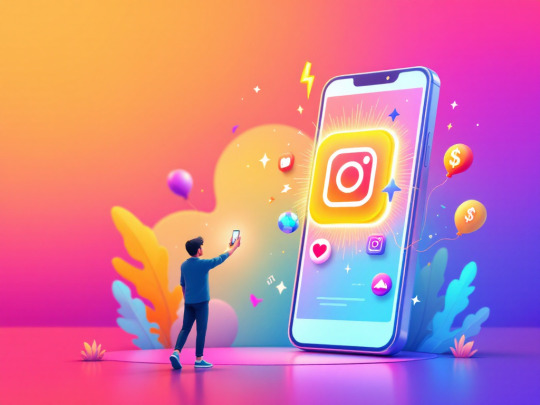
In the ever-evolving world of social media, Instagram stands out as a powerful platform for businesses and individuals alike. Building a real, engaged following on Instagram can significantly boost your brand’s visibility and success. The “Modern Instagram Marketing” video course offers a step-by-step guide to achieving just that. Let’s dive into the most important features of this course and how it can help you master Instagram marketing.
Ready to take your Instagram marketing to the next level? Don’t miss out on this limited special offer! Click here to download the “Modern Instagram Marketing” video course and start building a real, engaged following on Instagram today!
Why Choose the Modern Instagram Marketing Video Course?
“Modern Instagram Marketing” video course is designed to provide you with actionable strategies and insights to build a genuine following on Instagram. Here are some of the key features that make this course a must-have for anyone looking to excel in Instagram marketing:
1. Reverse Engineering Competitor Success

One of the most effective ways to understand what works on Instagram is to analyze your competitors. This course teaches you how to:
Identify and list your competitors
Analyze their Instagram profiles, content strategies, and hashtags
Reverse engineer their success to identify common hashtags, popular content, and effective sales funnel strategies
By understanding what works for your competitors, you can replicate and improve upon their strategies to gain a competitive edge.
2. Curating Top-Notch Content
Content is king on Instagram, and this course emphasizes the importance of creating high-quality, engaging content. You’ll learn how to:
Improve existing niche content by updating it, enhancing production quality, and adding more details
Use better hashtags and create a compelling series
Leverage an influencer distribution network and include effective calls to action
Ready to take your Instagram marketing to the next level? Don’t miss out on this limited special offer! Click here to download the “Modern Instagram Marketing” video course and start building a real, engaged following on Instagram today!
3. Adopting a Content-First sales funnel
A content-first approach is crucial for converting raw traffic into loyal followers and customers. The course explains the KLT (Know, Like, Trust) process and how to:
Build trust through multi-page strategies
Walk visitors through the trust stage with controlled messaging
4. Utilizing Facebook’s Ad Retargeting System
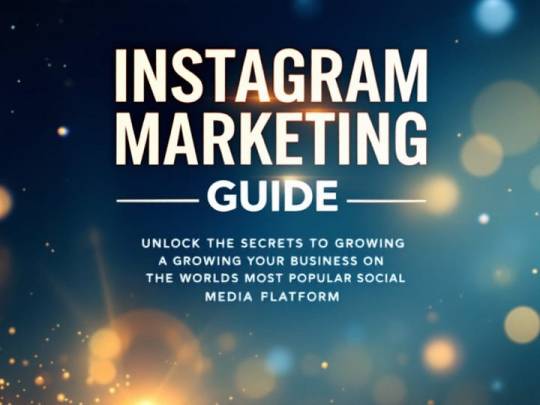
Retargeting is a powerful tool for pulling Instagram users deeper into your funnel. This course teaches you how to:
Use an episodic profile link that changes based on your marketing campaign’s content
Retarget visitors who click deeper into your site or visit product/order pages
Draw truly interested people back to your content
5. Interacting with Niche-Specific Influencers
Influencer marketing can significantly boost your reach and engagement. The course provides insights into:
Identifying real influencers with genuine engagement and conversions
Avoiding fake influencers with low engagement ratios and overly commercial accounts
Starting with a low and slow buy to focus on accounts that deliver results
6. Continuously Optimizing Your Funnel
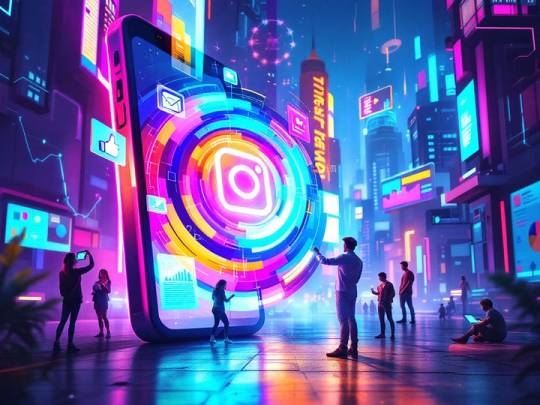
Optimization is key to maintaining and improving your Instagram marketing efforts. The course covers:
Elemental optimization of profile URLs, photos, tags, descriptions, and posting times
Looking for increased click-through rates, dwell time, deep clicks, and better conversion rates
Frequently Asked Questions
Q: How can I identify fake influencers?
A: Look for signs such as a roughly equal number of followers and following, a low total engagement ratio, little engagement with fans, and an overly commercial account.
Q: What is the KLT process?
A: The KLT process stands for Know, Like, Trust. It’s a strategy to build trust with your audience through content marketing, walking them through the trust stage with controlled messaging.
Q: Why is retargeting important?
A: Retargeting helps remind people to come back to your content, drawing truly interested individuals deeper into your funnel and increasing the likelihood of conversion.
Ready to take your Instagram marketing to the next level? Don’t miss out on this limited special offer! Click here to download the “Modern Instagram Marketing” video course and start building a real, engaged following on Instagram today!
By following the strategies and insights provided in the “Modern Instagram Marketing” video course, you’ll be well on your way to mastering Instagram marketing and achieving your goals. Don’t wait—start your journey to Instagram success now!
#Build Instagram following#Competitor analysis on Instagram#Content-first sales funnel#Effective Instagram ads#Facebook ad retargeting#Grow Instagram engagement#Influencer marketing strategies#Instagram content strategy#Instagram hashtags#Instagram influencer engagement#Instagram marketing#Instagram marketing for businesses#Instagram marketing success#Instagram video course#KLT process (Know#Learn Instagram marketing#Like#Modern Instagram Marketing#Optimize Instagram funnel#Social Media Marketing#Trust)
0 notes
Text
Facebook Ads and Social Media Marketing
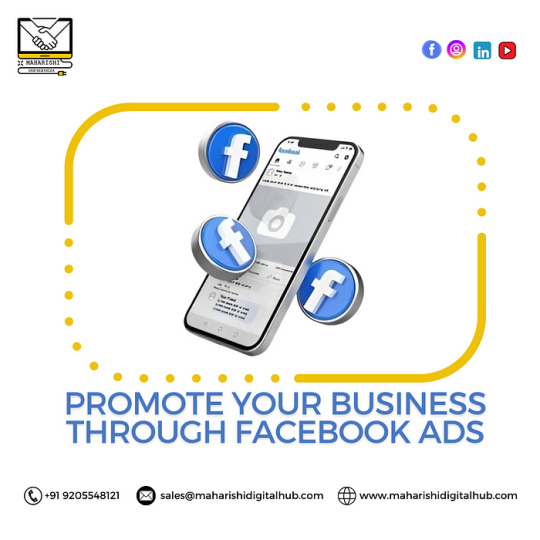
In today’s competitive digital landscape, social media marketing is no longer optional — it’s a necessity. Whether you’re a startup or an established brand, having a strong online presence is crucial for engaging with your audience and driving sales. One of the most powerful tools available for businesses is Facebook Ads Management, a strategic way to target potential customers and expand brand reach.
Why Facebook Ads Matter for Your Business
Facebook remains one of the most popular social media platforms, with billions of users scrolling through their feeds daily. With Facebook Ads Management, businesses can:
Target the Right Audience: Advanced targeting features help you reach users based on demographics, interests, and behaviors.
Increase Conversions: Strategic ad placement ensures your brand appears in front of people most likely to engage and purchase.
Retarget Potential Customers: Remind past visitors about your products or services and encourage them to take action.
Investing in professional Facebook Ads Management ensures that your campaigns are optimized for the best results, reducing wasted ad spend and maximizing return on investment.
Instagram Marketing Experts: Leveraging Visual Content for Engagement
Instagram is another powerful tool that businesses can’t afford to ignore. As a visually driven platform, Instagram allows brands to connect with their audience through high-quality images, reels, and stories. Our Instagram Marketing Experts can help you:
Create compelling visuals and engaging captions.
Implement a content strategy that increases brand awareness.
Use Instagram Ads to reach new potential customers.
A strong Instagram presence complements your Facebook advertising efforts, creating a well-rounded social media marketing strategy.
The Power of a Social Media Content Strategy
Posting randomly on social media won’t help you build a loyal audience. A well-planned Social Media Content Strategy ensures consistency, engagement, and higher conversion rates. Our team focuses on:
Content Planning: Crafting posts that align with your brand’s goals.
Engagement Strategies: Encouraging audience interaction through comments, polls, and direct messaging.
Performance Analytics: Tracking insights to refine content for better results.
Boost Social Media Engagement and Build a Loyal Community
Simply posting on social media isn’t enough. Businesses need to actively boost social media engagement to stand out in crowded feeds. This involves:
Hosting interactive sessions like Q&A, live videos, and giveaways.
Responding to comments and messages promptly.
Using eye-catching graphics, trending hashtags, and engaging captions.
The more engagement your posts receive, the higher they rank in algorithms, increasing visibility and brand awareness.
Expanding Your Reach with LinkedIn Marketing Services
While Facebook and Instagram are great for B2C businesses, LinkedIn Marketing Services play a crucial role in B2B branding. LinkedIn helps professionals and companies connect, collaborate, and build industry authority. Our LinkedIn marketing strategies include:
Optimizing company profiles for better visibility.
Creating thought leadership content to establish credibility.
Running LinkedIn Ads to generate high-quality leads.
Final Thoughts
Whether you’re looking to increase conversions with Facebook Ads Management, grow your presence with Instagram Marketing Experts, or create a winning Social Media Content Strategy, having the right team on your side is essential.
At Maharishi Digital Hub, we specialize in boosting social media engagement and providing LinkedIn Marketing Services that drive real results.
📩 Let’s take your business to the next level! Contact us at [email protected] or visit www.maharishidigitalhub.com to get started today.
2 notes
·
View notes
Text
PPC for E-commerce | Anadee Digital Solutions
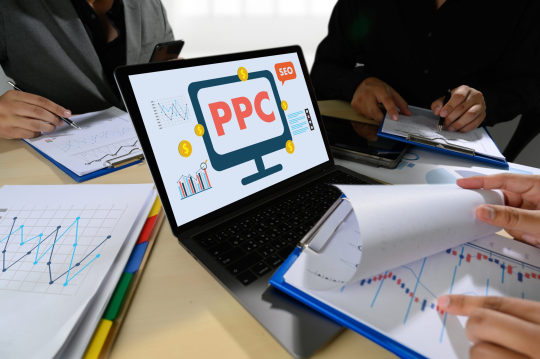
PPC for E-commerce: A Complete Guide to Boosting Sales and Driving Growth
As the e-commerce industry expands, competition for consumer attention has become fiercer than ever. To effectively stand out and drive traffic to your online store, Pay-Per-Click (PPC) advertising has become an essential tool. By targeting potential customers at every stage of their buying journey, PPC campaigns can significantly increase both visibility and sales. In this guide, we’ll break down how to implement PPC for e-commerce, along with actionable tips to maximize your returns.
Understanding PPC for E-commerce
PPC advertising involves paying a fee each time someone clicks on one of your ads. These ads are placed on search engines, social media platforms, and other sites where users may be interested in your products. For e-commerce businesses, PPC campaigns can bring targeted traffic directly to product pages, boosting the likelihood of conversions.
PPC ads can be tailored to reach specific demographics, locations, or interests, giving businesses greater control over who sees their ads and when. PPC also includes multiple formats such as Google Search Ads, Display Ads, Shopping Ads, and Social Media Ads, which makes it adaptable to various campaign objectives, from product awareness to driving sales.
Benefits of PPC for E-commerce Businesses
Quick Results: PPC campaigns can generate immediate traffic and results.
High ROI Potential: With strategic targeting and budget control, PPC can deliver high returns by focusing on audiences likely to convert.
Scalability: You can start small and increase your budget as you see success.
Measurable Performance: PPC provides real-time analytics that allows you to track impressions, clicks, and conversions to optimize your campaigns.
Reaching Your Target Market: With specific targeting options, you can focus on consumers who are actively searching for your products or services.
Best PPC Strategies for E-commerce
1. Google Shopping Ads
Google Shopping Ads are essential for e-commerce. They display product images, prices, and descriptions directly on the search engine results page (SERP), making them more engaging and relevant to online shoppers. To make the most of Shopping Ads, ensure your product data feed is optimized. Use clear, high-quality images and relevant product titles and descriptions. Google uses this information to match search queries with your products, so precise descriptions help you reach a highly interested audience.
2. Remarketing Campaigns
Remarketing helps you target visitors who have previously shown interest in your products but didn’t complete a purchase. By creating tailored ads that remind them of items they viewed or abandoned in their cart, you increase the likelihood of conversions. Dynamic remarketing campaigns allow you to show personalized ads that feature specific products from your catalogue, keeping your brand and items top-of-mind for potential buyers.
3. Utilizing Social Media Ads
Social media platforms, such as Facebook and Instagram, allow for highly detailed audience targeting. Social media ads are excellent for brand awareness, generating leads, and even retargeting website visitors. For e-commerce, carousel ads are particularly effective because they enable users to scroll through multiple products within a single ad, increasing interaction rates.
4. Keyword and Competitor Analysis
Before launching a PPC campaign, conduct thorough keyword research to determine which search terms are likely to drive relevant traffic to your site. Using tools like Google Keyword Planner can help you find high-intent keywords related to your products. Additionally, performing competitor analysis allows you to identify gaps in your strategy, adjust bids on competitive keywords, and keep a competitive edge in the SERPs.
5. A/B Testing and Optimization
Constantly test and optimize your ad copy, visuals, and calls-to-action (CTAs). A/B testing enables you to find the most effective ads and maximize performance. For instance, experiment with different headlines, descriptions, and images in Google Shopping Ads. Similarly, monitor your campaign’s performance data to adjust bids, targeting, and budgets based on what’s working.
Measuring Success in PPC
Key metrics to monitor include:
Click-Through Rate (CTR): Indicates the relevancy of your ads to the audience.
Conversion Rate: Measures how many clicks turn into sales.
Cost Per Click (CPC): Tracks spending efficiency.
Return on Ad Spend (ROAS): Measures the revenue generated from your ad spend.
By analyzing these metrics, you can continually refine your PPC strategy to improve ROI and achieve better results.
PPC for e-commerce is a powerful way to drive targeted traffic, increase visibility, and boost sales. Anadee Digital offers the best-customized campaigns for your E-commerce business. By understanding your audience, using effective ad formats, and refining campaigns based on performance data, Anadee can create PPC campaigns that support your growth and revenue goals. With a well-executed PPC strategy, your e-commerce store can not only compete in today’s market but thrive. Contact us today to get a free audit of your e-commerce website and know more about the bottlenecks in your sales campaigns.
2 notes
·
View notes
Text
youtube
Taking Control of Your Bookings with Crafted Stays
👋 Hey hosts! Are you tired of relying solely on big platforms for bookings? We just chatted with Gil from Crafted Stays, and wow – he’s shaking things up in the world of direct bookings!
Crafted Stays: A Better Way for Hosts
Gil and his wife started Crafted Stays during the pandemic when they realized the limitations of typical booking sites. Instead of spending thousands on an agency, Gil built his first site from scratch. Fast forward, and Crafted Stays is here to help you build beautiful, high-converting sites that give you control.
Top Features of Crafted Stays
Crafted Stays has some seriously cool features that make it a game-changer for hosts:
Cart Abandonment 🛒 – Don’t let potential guests slip away! If they don’t complete their booking, the site will remind them, helping you win back that reservation.
Fast, Mobile-Friendly Sites 📲 – No more slow-loading mobile pages! Crafted Stays is optimized for mobile, so your site looks fab on every device.
PMS Integration 🏠 – Sync your PMS for real-time updates and forget about manual changes.
Tips for New Hosts
Gil gave us some awesome tips for hosts starting their first booking site:
Know Your Guest: Define your ideal guest (we call it an Avatar 😉). Everything on your site should speak directly to them!
Email is Gold: Start collecting emails ASAP. You can send updates, specials, and keep guests coming back.
Use Retargeting: People need a few reminders before they book. Set up Facebook ads to retarget visitors who didn’t book on the first visit.
Join the Crafted Stays Community
Ready to step into the world of direct bookings? Crafted Stays makes it easy and affordable, with a plan starting at just $59! Explore the future of hosting with Crafted Stays, and reclaim control over your bookings.
2 notes
·
View notes
Text
The 10 Biggest Facebook Ad Mistakes that you must avoid: 1.Hitting the “Boost Post” Button Instead of Using Ads Manager 2.Not Choosing the Right Bidding Option and Bidding the Right Amount 3.Unengaging Ad Creative 4.Targeting the Wrong Audience 5.Weak Call-to-Action (CTA) 6.Using the Wrong Facebook Ad Type 7.Not Leveraging Retargeting 8.Creating New Ads When Your Campaigns Are Working 9.Using Too Much Text on Your Ad Images 10.Copying Ads from Others
2 notes
·
View notes